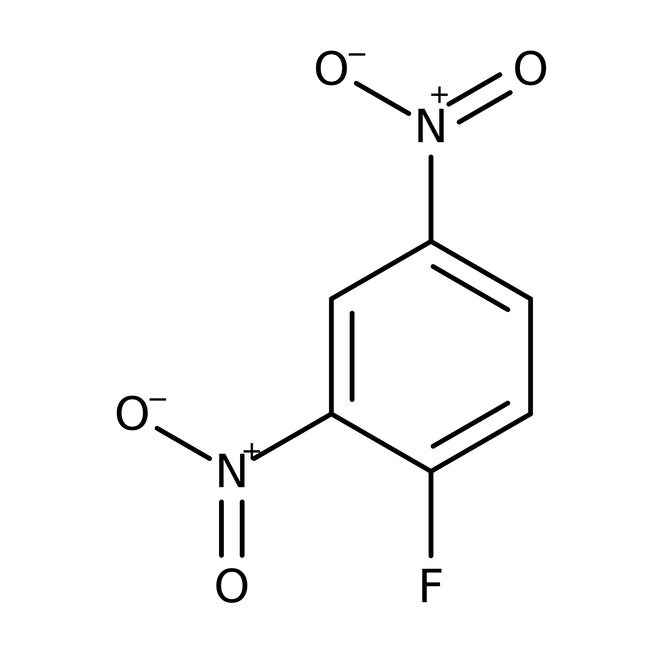Search Thermo Fisher Scientific
1-fluoro-2,4-dinitrobenzène, 99 %, Thermo Scientific Chemicals



1-fluoro-2,4-dinitrobenzène, 99 %, Thermo Scientific Chemicals
Identifiants chimiques
Spécifications
Description
This Thermo Scientific Chemicals brand product was originally part of the Alfa Aesar product portfolio. Some documentation and label information may refer to the legacy brand. The original Alfa Aesar product / item code or SKU reference has not changed as a part of the brand transition to Thermo Scientific Chemicals.
Le 1-fluoro-2,4-dinitrobenzène permet d’identifier la séquence d’acides aminés. Il réagit avec les groupes aminos d’acides aminés pour produire des acides dinitrophényl-amino. Il est également utilisé dans les méthodes chromatographiques. De plus, il agit comme un agent alkylant utilisé dans l’élucidation de la séquence des acides aminés dans les protéines.
Solubilité
Soluble dans le chloroforme, le benzène, l’éther et le propylène glycol.
Remarques
Sensible à l’humidité. Stocker dans un endroit frais. Incompatible avec les agents oxydants forts et les bases fortes.
Figures
Documentation et téléchargements
Certificats
Foire aux questions (FAQ)
Citations et références
Sécurité et manipulation
Classification of the substance or mixture
CLP classification - Regulation(EC) No 1272/2008
Label Elements
Signal Word
Danger
Hazard Statements
H301 + H311 + H331 - Toxic if swallowed, in contact with skin or if inhaled
H315 - Causes skin irritation
H317 - May cause an allergic skin reaction
H319 - Causes serious eye irritation
H335 - May cause respiratory irritation
H373 - May cause damage to organs through prolonged or repeated exposure
Precautionary Statements
P280 - Wear protective gloves/protective clothing/eye protection/face protection
P301 + P330 + P331 - IF SWALLOWED: rinse mouth. Do NOT induce vomiting
P302 + P352 - IF ON SKIN: Wash with plenty of soap and water
P304 + P340 - IF INHALED: Remove person to fresh air and keep comfortable for breathing
P305 + P351 + P338 - IF IN EYES: Rinse cautiously with water for several minutes. Remove contact lenses, if present and easy to do. Continue rinsing
P311 - Call a POISON CENTER or doctor/physician